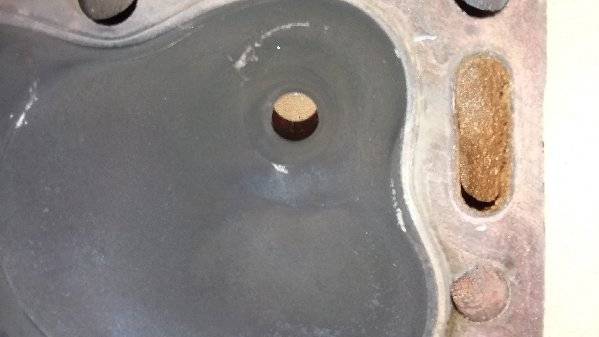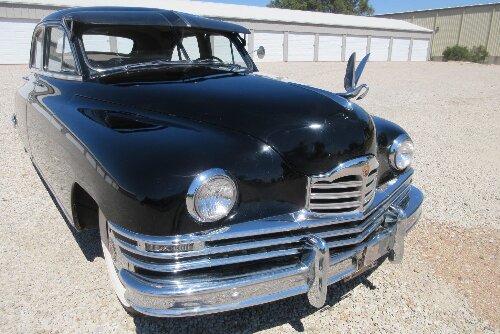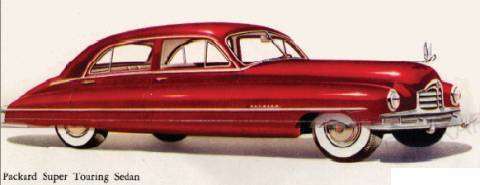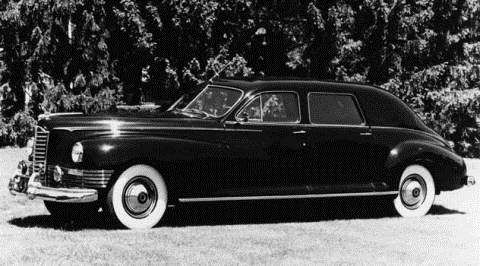|
Overdrive Governor Adjustment
|
||||
|---|---|---|---|---|
|
Home away from home
|
My '41 has both Electromatic Clutch and OD. Both work well. Recently, the OD stopped engaging.
I found that the EC wire on my governor was quite loose. It is held in by a long screw with a bolt that tightens the wire. I tightened both the screw and the bolt to secure the wire. That did not help. I changed out for the governor on my spare OD, which works, but the weights are different and the engagement speed is way too low. I came to think I maybe got the screw in too far and shorted the points. One of my manuals says to test the governor by hooking up a test lamp. The lamp should light at the EC terminal and not the AD terminal. So, I did that, screwing in the screw only until I got the EC terminal to light the test lamp. The AD terminal does not light it. That too does not work once in the car (with the original governor and correct weight set). Doesn't appear to be a good way to test the AD engagement out of the car. Any thoughts on why this doesn't work once I get the test light to light? The Electromatic clutch does work with either governor.
Posted on: 2022/8/27 16:00
|
|||
|
1941 Touring Sedan
1952 250 Convertible 1932 902 Rumble seat Coupe  Who is John Galt? Who is John Galt?
|
||||
|
||||
|
Can Lifter be replaced without pulling the head?
|
||||
|---|---|---|---|---|
|
Home away from home
|
My '52 250 has been plagued with an ongoing very loud lifter noise. I stopped doing anything (everything?) when COVID hit. Now I am back at it.
I have isolated the lifter. I wonder if it is possible to change a lifter without pulling the head. I am sure I can pressurize the cylinder and get the keepers and spring off (and back on). But will I be able to push the valve up enough to get the hydralic lifter out of the lifter cup? or is there just not possible to move the valve high enough with the head on?
Posted on: 2022/8/26 0:23
|
|||
|
1941 Touring Sedan
1952 250 Convertible 1932 902 Rumble seat Coupe  Who is John Galt? Who is John Galt?
|
||||
|
||||
|
Re: tracking down ticking noise
|
||||
|---|---|---|---|---|
|
Home away from home
|
Since I had the head off to replace the lifters, I removed all the valves, they were all cleaned before re-assembly. Everything in this engine is quite clean. It was rebuilt about 6 years ago(not by me), with not many miles since. No gunk anywhere. I don't think there is much chance of a sticking valve, but I will try the suggestion just to see if it affects the noise at all. Willing to try anything. I also tested the valve springs, which were fine as well. Did not have the head surfaced, so I don't think clearances have changed all that much.
The noise only starts after the motor has heated up, though now it comes on quicker - that is after only a few minutes. Before it took maybe twenty to thirty minutes to become noticable. Compression is 105 to 110 across all cylinders.
Posted on: 2019/6/21 18:07
|
|||
|
1941 Touring Sedan
1952 250 Convertible 1932 902 Rumble seat Coupe  Who is John Galt? Who is John Galt?
|
||||
|
||||
|
Re: tracking down ticking noise
|
||||
|---|---|---|---|---|
|
Home away from home
|
Put everything back together. For the first wonderful half hour or so, the motor sounded great. But after driving it at about 55 for about half an hour, the dreaded noise is back, louder than ever it seems. At this point I have pretty much ruled out top end.
I can hear the noise the loudest with my stethescope directly on the passenger side cylinder head bolts directly between no. four and five cylinders. Directly on the head it is quieter. Pulling plug wires individually does not affect the noise. Seems to be getting louder over time. I think next I'll plasigage the rods, then the mains. Generally, again with my scope, the sound is much less underneath the car on a lift then up top, but sound can travel through the engine in all kinds of funny ways. Really can't find it much from underneath. One thing I do note though, from underneath, the sound (whether a tick or a knock) is most distinguishable with my scope directly on the passenger side motor mount, and also directly on the oil pump bolts. Both areas transmit through the scope quite loudly and clearly. I did replace the oil pump gasket last time I did this exercise with a regular gasket. I see some of the guys on the forum say to use very thin paper. I get a constant 30 lbs (but spec is 40) at idle as well as under acceleration. I do wonder if there is anything in the oil pump (or my installation) that could cause a ticking or knocking noise. I assume this is probably just sound traveling, but I did pull the pump last time before this noise became more noticable. Would have bet this was top end, but I am running out of possibilities. Any thoughts or suggestions are appreciated.
Posted on: 2019/6/20 1:37
|
|||
|
1941 Touring Sedan
1952 250 Convertible 1932 902 Rumble seat Coupe  Who is John Galt? Who is John Galt?
|
||||
|
||||
|
Re: tracking down ticking noise
|
||||
|---|---|---|---|---|
|
Home away from home
|
I am putting this back together now. When I did this last time, I replaced the hydralic lifters, so they were new and went in dry. Should I flush out the lifters with kerosine before I put them back in, or are they OK to go in with oil in them?
Posted on: 2019/6/6 13:23
|
|||
|
1941 Touring Sedan
1952 250 Convertible 1932 902 Rumble seat Coupe  Who is John Galt? Who is John Galt?
|
||||
|
||||
|
Re: tracking down ticking noise
|
||||
|---|---|---|---|---|
|
Home away from home
|
I need to replace one exhaust valve before I put this back together. Since I am using all the other original valves in the original holes, i'll just lap the one new one.
I had the valve springs tested and they are all good. The head checked and it is good. I did not have it surfaced. Last time around, I retorqued this several times, and it always seemed to need it. Head gasket is from Merritt, and I think it is copper clad. I have always waited for an engine to cool before retorquing, which I think is correct for cast. I will immediately retorque after i first start it and let it get up to temperature. After that, how many times should I need to retorque the head?
Posted on: 2019/5/22 12:35
|
|||
|
1941 Touring Sedan
1952 250 Convertible 1932 902 Rumble seat Coupe  Who is John Galt? Who is John Galt?
|
||||
|
||||
|
Re: tracking down ticking noise
|
||||
|---|---|---|---|---|
|
Home away from home
|
This is supposed to check the "take-up reserve" on each of the hydraulic lifters, which is what you are referring to. I did not originally do this because I didn't have the tool and i did not change any valves or reseat any of them. I did number the valves as they came out, so I am pretty certain they all went back in their original positions.
When I started getting this ticking, it is one of the things I considered could be an issue, so I got the tool in order to check it. But, as noted, I seem to have plenty of clearance at the offending valve. I do assume if the gap is too small, then it could result in the valve extending too far into the cylinder and hitting the head. I wonder if the hydraulic itself is not collapsing to the extent required during the cycle. I will change out this hydraulic in any case. I don't see any way to actually check the tolerances with the hydraulic lifter in place. It looks to me like the head gaskets are identicle. I hung to old one on a peg when i originally pulled apart the engine, so i will check the thickness when i am in my garage next, but I think they are the same.
Posted on: 2019/5/8 13:00
|
|||
|
1941 Touring Sedan
1952 250 Convertible 1932 902 Rumble seat Coupe  Who is John Galt? Who is John Galt?
|
||||
|
||||
|
tracking down ticking noise
|
||||
|---|---|---|---|---|
|
Home away from home
|
Last year I replaced the hydraulic lifters in my '52 250 (there are a number of threads on that project in the forum). After just a short period of operation, I developed a ticking noise which sounded very much like a failed lifter. The car had to be fully at operating temperature to hear the noise (maybe run for 20 minutes or so), but it was very noticeable once it would start. Always runs and idles great, and is completely quite on start up until it gets fully hot.
I have been unable to really track it down. I pulled the valve covers and used a stethoscope on each valve stem and on each lifter - not easy because they are always turning. I could never head the noise at those locations. I could see no indication of failure of any lifter - no excess oil shooting out, and the lifters appeared to be operating, properly turning as they operated, etc. I pulled a couple of the rod bearing caps and plastigauged them. Tried individually pulling plug wires, etc. I do feel it is high up in the engine, not a rod or main. I pulled the head off and will test the lifters. But, I did see something that may be the issue. On #8 cylinder, I note a small semi-circular mark around one side of the sparkplug. This indicates the exhaust valve has contacted the cylinder head. The mark is very shallow, appears to be just breaking the carbon on the head. I have attached a picture of the head and related # eight cylinder. I am somewhat doubtful that this is the issue though, because when I originally did the work, I did not surface the head or reseat the valves, so it seems as though nothing should have changed and I did not have this noise before. Also, I have the lifter clearance tool J-4540, and I have .052 clearance between the tool and the valve stem on this valve. Requirement is .030 to .070. The exhaust valve on #1 Cylinder is the only one out of spec at .028, but there is no indication of contact, and the noise definitely was from the back half of the engine. All other valves were between .041 and 068. Regardless of the clearances, it does appear that the valve has stuck the head. It does not appear to be bent, and I have checked it with a dial indicator. If it is bent, that could cause it to fail to fully seat and increase the gap between the valve and the tool. I will have my machine shop double check it for me to be sure it is not bent. Assuming it is not bent, I am trying to understand how the valve could hit the head given the measured gap at the valve stem. Maybe something with the hydraulic part of the lifter? The head gasket looked great and definitely was not damaged. The car idled smoothly and ran as good as ever. Looking for any ideas to understand this a bit better.
Posted on: 2019/5/8 2:16
|
|||
|
1941 Touring Sedan
1952 250 Convertible 1932 902 Rumble seat Coupe  Who is John Galt? Who is John Galt?
|
||||
|
||||
|
Re: Overdrive wiring issue
|
||||
|---|---|---|---|---|
|
Home away from home
|
I think I explained this badly. The picture showing the shaft extending and pushing the points up is with pressure on the shaft. at rest, it is where it should be. But, somehow upon returning to the out of OD position, it extended enough to hit the top of the case and force the points to either side of the shaft. It hung up there, held by the arms holding the points.
My question is whether the shaft should be able to travel that far in the wrong direction, and if so, what would cause it to do so? Does the shaft has a positive stop, or can it normally be pushed in the wrong direction and travel that far. I have attached a fairly poor quality picture of the solenoid at its normal unpowered position.
Posted on: 2019/4/17 18:19
|
|||
|
1941 Touring Sedan
1952 250 Convertible 1932 902 Rumble seat Coupe  Who is John Galt? Who is John Galt?
|
||||
|
||||

 20220826_132318.jpg (192.21 KB)
20220826_132318.jpg (192.21 KB)











